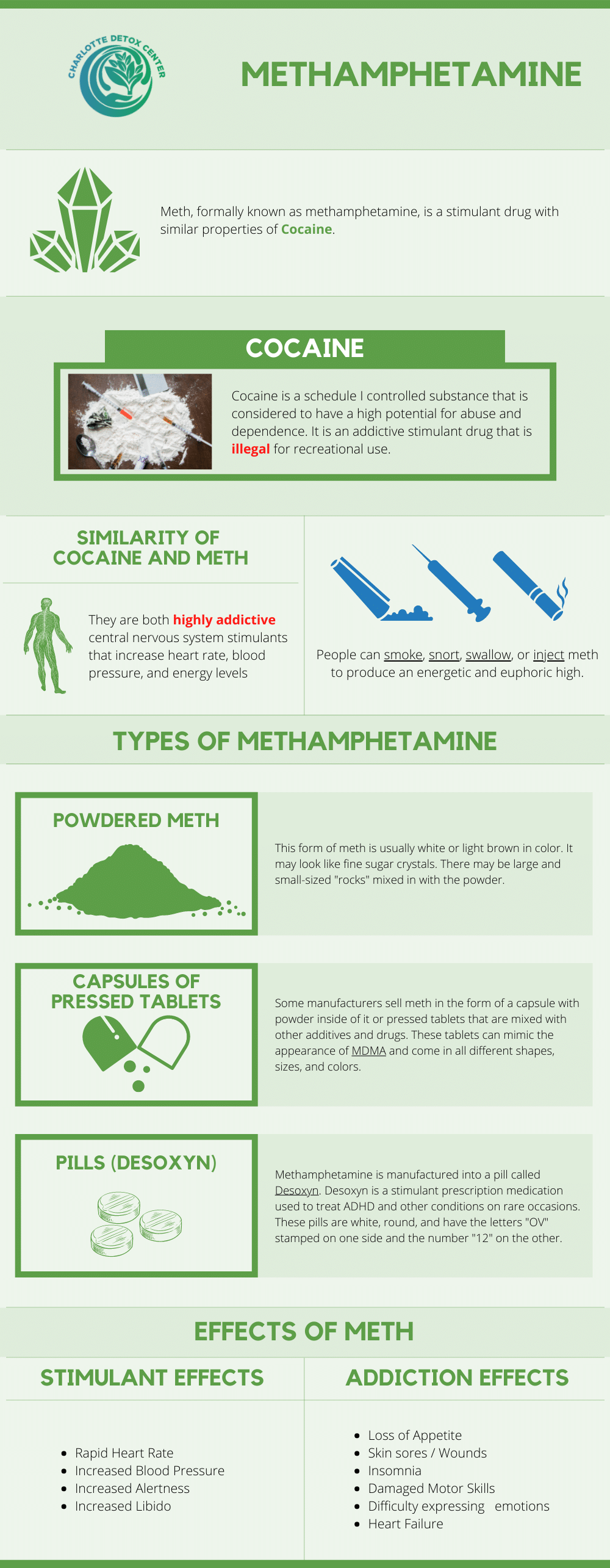Meth Withdrawal and Detox

Medically Verified: 2/1/24
Medical Reviewer
Chief Editor

All of the information on this page has been reviewed and verified by a certified addiction professional.
While it may not be the leading substance of abuse in America, methamphetamine abuse is a serious issue across the nation. Due to the potency of meth, the use of this drug can lead to rapid dependency. People who use meth recreationally will experience a “crash” period after they stop using the drug. However, people addicted or dependent on methamphetamine will experience withdrawal symptoms that last for several weeks. As a result, many users will start using meth again in order to avoid or soothe the severe withdrawal symptoms that they feel. This often perpetuates a downward spiral of methamphetamine abuse and addiction – perpetuating the cycle of addiction.
Unfortunately, by the time many users decide it is time for them to quit, the withdrawal symptoms are too severe for them to safely quit on their own. Luckily, medical drug detox centers are able to help patients safely remove methamphetamine from their bodies without experiencing severe withdrawal symptoms. Through the use of approved medications, counseling, and round-the-clock medical care, patients detoxing from methamphetamine can achieve long-lasting sobriety.

Meth Withdrawal Symptoms
The symptoms of meth withdrawal vary from person to person depending on a number of different factors. Some of these factors include how long they used meth, how much meth they used at a time, how often they used meth, and whether or not they engaged in polydrug use. Additionally, withdrawal symptoms may depend on how the individual used methamphetamine. For example, those who used meth intravenously may experience a longer and more intense withdrawal period.
Signs and symptoms of meth withdrawal include:

- Confusion or agitation
- Increased appetite
- Nausea or stomach ache
- Loss of motivation or fatigue
- Insomnia
- Tremors
- Excessive sweating
- Suicidal thoughts
- Hallucinations or paranoia 58
- Anxiety
- Fever
- Severe depression
- Red, itchy eyes
- Dehydration
If you or a loved one are experiencing any of these symptoms, please seek medical attention as soon as possible. Attempting to withdrawal from meth without the help of medical professionals can be dangerous and life-threatening. Additionally, individuals who attend medical detoxing facilities tend to have better success rates.
Meth Withdrawal Timeline
The typical timeline for individuals going through meth withdrawal will vary from person to person. However, the acute phase of withdrawal typically peaks a day or two after the individual’s last use of meth and usually subsides after a week. On the other hand, psychological symptoms including mood swings, drug cravings, and sleep disturbances can persist for multiple weeks for some individuals. Additionally, some recovering meth addicts have shown symptoms of withdrawal-related depression continuing on for up to a year.
Timeline of Meth Withdrawal Symptoms
What is Meth Detox Like?
Making the decision to go to detox is extremely scary. However, if you or a loved one is in need of detox for meth addiction, you can rest assured that professional addiction detox centers prioritize their patient’s mental and physical health. Detox is broken down into three stages in order to provide every patient with an extensive and effective detox experience. First, patients will go through a comprehensive health review so doctors and therapists are well-informed of what the individual patient’s needs are. Next, patients will begin their individualized detox plan. After the patient completes the withdrawal phase, doctors will sit down with the patient to discuss their next steps. The detox process for individuals recovering from meth addiction can be broken down into the three following steps:
Initial Evaluation
In order to prioritize the safety of each patient, detox starts off with an initial health and mental well-being evaluation. Doctors and nurses will begin by doing a drug urinalysis test in order to determine how much meth is in the patient’s system. As a result, medical professionals are able to determine an estimated length of treatment that the individual patient requires Additionally, it is important to keep in mind that doctors and nurses need to be aware of any co-occurring disorders. In any addiction treatment facility, including meth detoxes, patients with co-occurring mental disorders will receive dual-diagnosis treatment.
Detox & Stabilization
Because many patients who arrive at detox facilities will often be at the peak of their withdrawal period, treatment starts as soon as possible. Doctors and nurses will be monitoring the patients’ health 24/7 in order to keep them safe and comfortable during their withdrawals. Also, as a patient’s withdrawal symptoms improve, doctors will adjust treatment accordingly. Most importantly, staff members will continue to update each patients’ loved ones on their progress.
Transitioning into Further Treatment
Lastly, nearing the end of a patient’s detox, doctors and therapists will begin to discuss options for the patient’s next steps. Detox is only the first step in addiction treatment and most recovering meth addicts benefit exponentially from continuing treatment in a residential facility. If detox is taking place within a treatment facility, doctors and staff will help the patient to transition into their next stage – allowing them to stay on track after detox and achieve long-term sobriety.
Finding Treatment for Meth Addiction
Attending a professional stimulant detox is the most effective way to treat meth addiction. If you or a loved one are suffering from meth addiction or dependence, do not wait. At Charlotte Detox Center, we prioritize each patient’s needs by providing individualized treatment plans. If you are suffering from meth addiction and would like to start a new way of life – contact us today.


